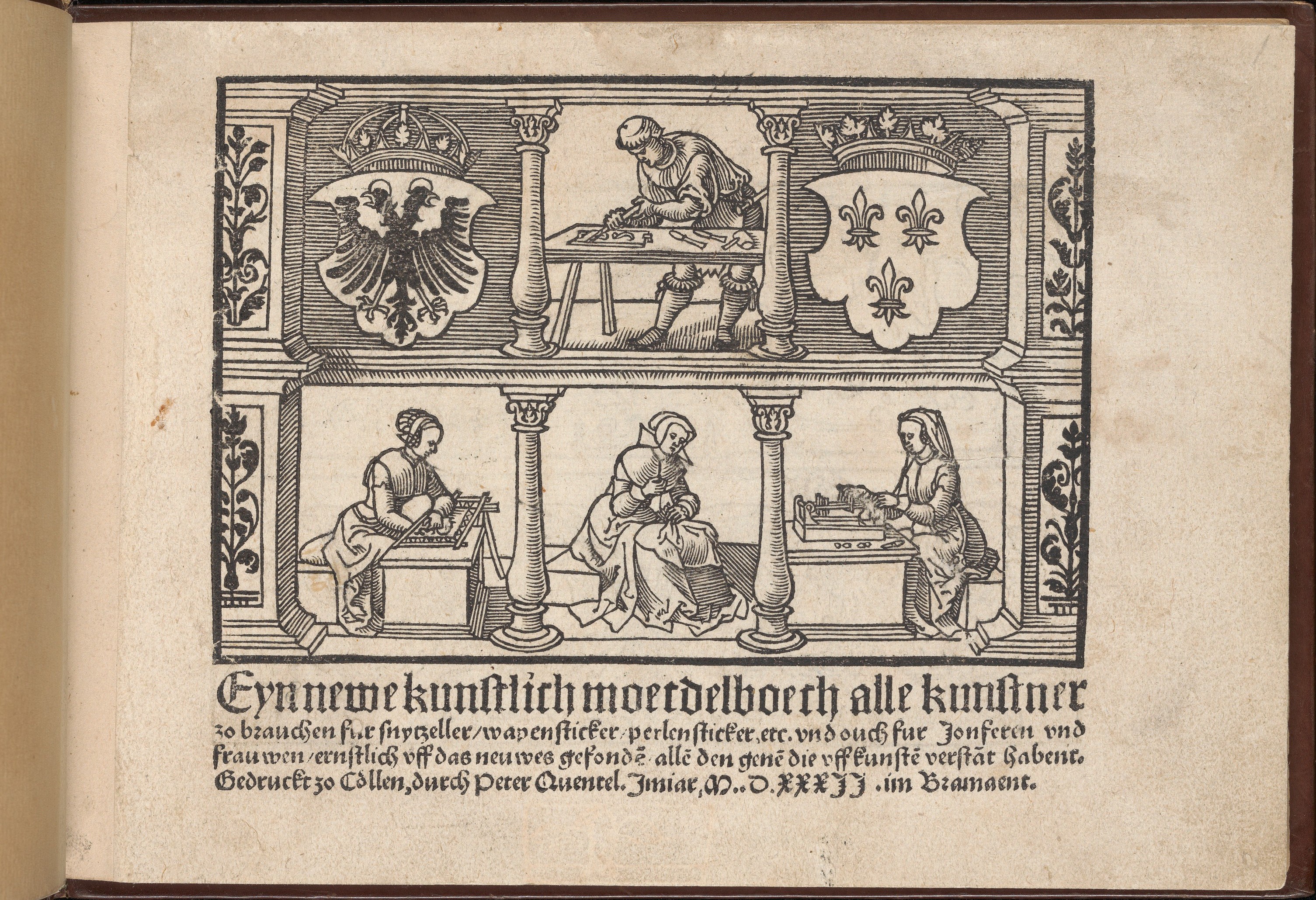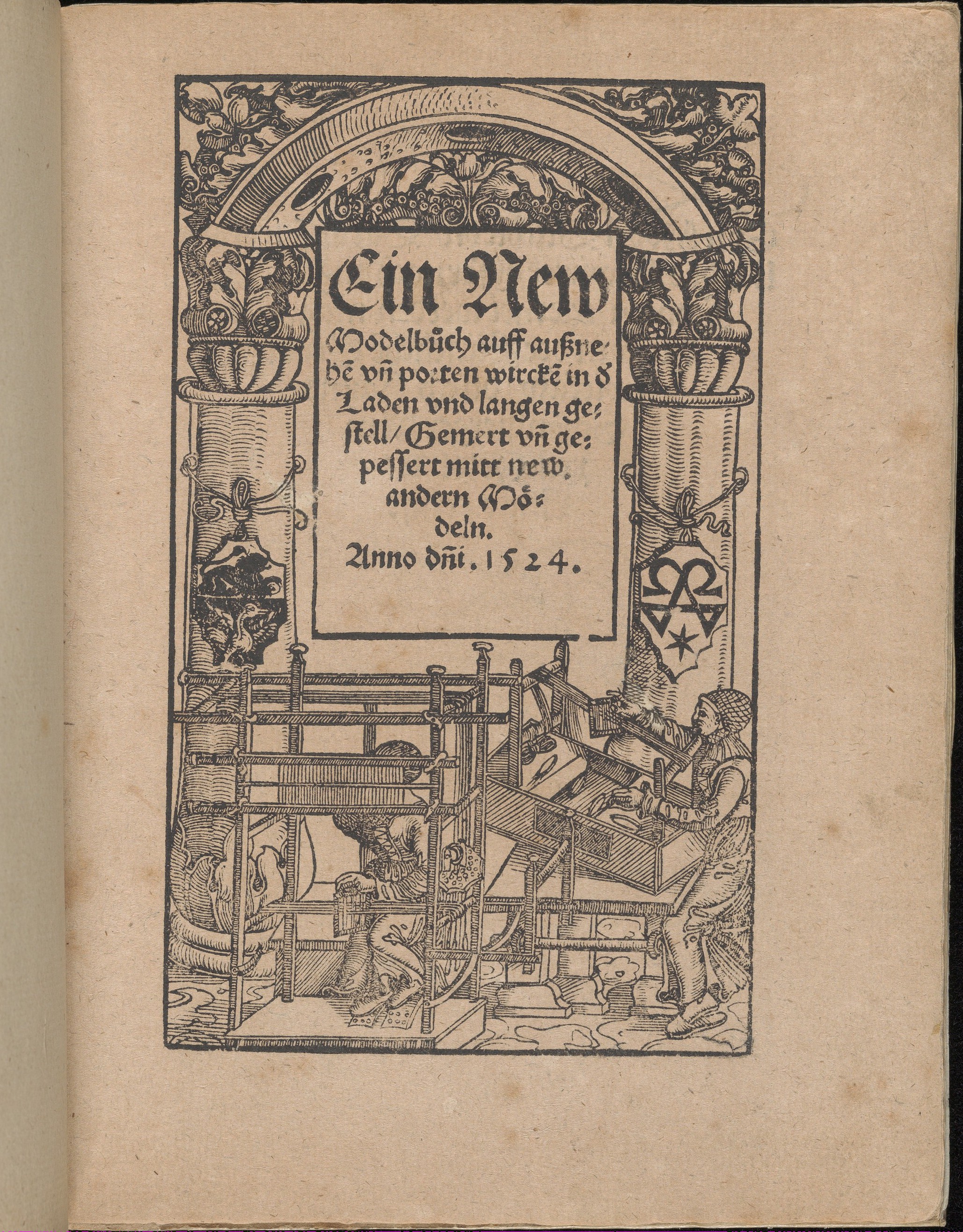17th century weaving - box tape loom
Jun. 3rd, 2024 05:13 pm
And will I manage to find one that is confirmed Civil War era, or only ones from a hundred years earlier...

And will I manage to find one that is confirmed Civil War era, or only ones from a hundred years earlier...
Having just paid my £20 membership for the English Civil War Society (and £5 extra to the regiment of my choice - Norfolke Trayned Bandes), I'm trying to find out how my inkle and tablet weaving hobbies would have worked in 1642.
The first one is from 1524, German, I presume. You have to look at the man on the right - his loom is supported in a box. It has two horizontal bars, supported by horizontal ones. The warp thread runs between the two horizontal bars and runs over the back bar to where extra warp is wound round another horizontal bar. On the warp, he is holding a square piece of wood with vertical slits in it (or possibly a wooden frame with strong thread tied across in several vertical rows.. That's called a rigid heddle. Every odd thread will pass through one part of the heddle, and every even thread passes though in a different way (the picture can't handle detail on that scale). When the heddle is lifted, it will raise all the odd-numbered threads, thus allowing the weft to pass under the odd threads, but over the even ones. When the heddle is moved down, the situation is reversed.
It allows you to weave in and out of the warp threads with no more effort than swapping the heddle position and passing the weft shuttle through. Reverse the heddle and pass the weft the other way, rinse and repeat until your band is as long as desired.
More types of loom to come, but I thought I'd stick to one per post.

On Friday, one of my friends told me that there was an English Civil War re-enactment battle in Wimborne over the bank holiday weekend.
Sounded right up my street. So, on Saturday afternoon, I popped into town on the bus and watched the Royalist troops march into Wimborne and make a proclamation on the Minster Green (very nice location in the centre of Wimborne), then listened to their leader make a speech, explaining how Wimborne would be protected by his troops from the forces of parliament -and incidentally, the people of Wimborne were expected to come forward, billet and feed the soldiers and give money to support the Royalist cause...
Fantastic ability to project his voice. I chatted to him later and complimented him, and he said he'd trained as a singer.
On Sunday, I came in again. There was a big group of 'Living History' volunteers (who came with the military re-enactors) and were willing to chat and demonstrate Tudor clothing, how it was made, what people would have eaten, what shoes they wore, etc. Also an interesting display of what a sutler (a person - sometimes female) who sold goods to the soldiers. And lute player, and people doing embroidery, etc.
Thoroughly enjoyed talking to people who really had studied the period in depth -and was able to hand on a few handy tips on tablet weaving by way of exchange.
Headed for home, when that session finished. Headed for the loo before catching the bus, and on the way to the public toilets (which turned out to be closed for renovation...) I passed the Oddfellows Arms, where I heard the sound of a really good sing around.
Listened for a few minutes, then decided to catch a later bus and spend the next two hours happily singing along with the men (and women) or the Norfolke Trayned Bands (fought for parliament and Cromwell). Best evening I can remember in a very long time.
The local folk clubs all seem to be 'sit and listen to a performer' now. I don't want that. I want the kind of sing-around where you're packed into a small space, everyone is singing, and it passes from singer to singer to start the next song. I knew 90% of the folk songs they were singing, so led a couple myself. They made me feel really welcome, so I've written a song for them, and I hope they'll like it!
Monday, I watched the actual 'Battle for Wimborne' which is where the photo comes from. Had interesting chats in the morning with people from several regiments who were incredibly knowledgeable about things like manufacturing gunpowder, rotating ranks of musket men, penetration of various weapons into armour. Muskets basically made armour redundant, which is why most civil war regiments didn't wear it - apart from helmets.
A great weekend, so good, I'm tempted to go and see another battle and meet up with these wonderfully insane people again!